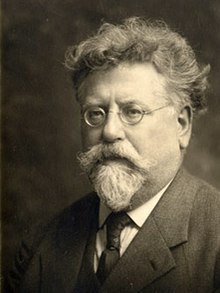
Anthony Barone | Contributing Writer
The book Anarcho-Syndicalism: Theory and Practice by Rudolf Rocker is a fantastic read for the politically inclined interested in other forms of societal organization. Anarcho-Syndicalism is the idea that labor unions and workplace councils can be used to determine how workplaces would function. Hypothetically, these organizations would use their power through democratic consensus via the employees’ input.
According to Rocker, “For the anarchist, freedom is not an abstract philosophical concept, but the vital concrete possibility of every human being to bring to full development all the powers, capacities and talents with which nature has endowed them, and turn them to social account … Common to all Anarchists is the desire to free society of all political and social coercive institutions which stand in the way of development of a free humanity.”
The book talks about Anarchism and how it functions, the history of the modern labor union, Anarcho-Syndicalism’s objectives, the methods it uses to achieve said goals, and the movements evolution. Anarchism is the idea that authoritarian government should be abolished and replaced with a cooperative society that focuses on meeting all people’s needs, which is explained in more detail in the first chapter.
In chapters two and three, the history of labor in the United States and Europe is described in great detail, starting in the 1800s through the mid 1900s. Chapters four through six offer an interesting picture of the organization and functionality of society under Anarcho-Syndicalism.
The theory of Anarcho-Syndicalism operates under the idea that the workplace should be collectivized by the workers. This means that the workers would get rid of their boss(es) and democratically decide through voting procedures how to operate the workplace. An example of this functioning would be voting on hours of operations, on how much of a product should be produced, on how to distribute said product, etc.
Rocker asserted that, “A system which in every act of its life sacrifices the welfare of large sections of the people, yes, of whole nations, to the selfish lust for power and the economic interests of small minorities must of necessity dissolve all social ties and lead to a constant war of all against all.”
This theory has been tried in many different places around the world, but the two main societies that were successful in the implementation of AnSyn are the Paris Commune and Revolutionary Spain. While both of said societies are no longer in existence due to the invasions by imperialist powers, their economies worked and were able to meet the demands of the populations they had to serve.
The book also goes into detail about how various labor unions and organizations have been able to unite hundreds of thousands of workers to fight the capitalist class, hence showing the large scale of the labor movement in the beginning of the modern industrial societies. The book mentions the outrage in England with the passage of the combination acts, which outlawed the formation of unions and labor organizations.
While much of the history spoken of is centered around the 19th through the early 20th century, the book remains relevant due to the enduring issue of the labor force being repressed under the state of capitalism. This book offers guidance on building comradery amongst the working class as well as on protecting workplaces, learning institutions, housing complexes, and urban neighborhoods. The record of each movement’s successes and failures offers lessons on how to fight for better working, living, and learning conditions.
On this history, Rocker said, “The peoples owe all political rights and privileges which we enjoy today in greater or lesser measure, not to the good will of their governments, but to their own strength. One needs only to study the history of the past three hundred years to understand by what relentless struggles every right has had to be wrested inch by inch from the despots.”
While this book is not for everyone, it is a great read for those who are interested in the history of the struggles of the labor force throughout the centuries.
Leave a Reply